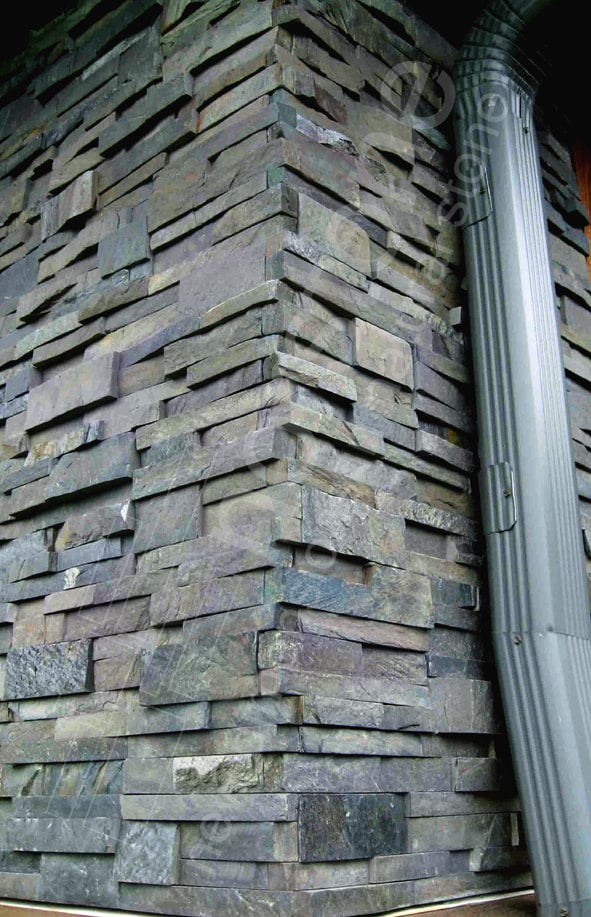
A dry stone wall is stacked dry–and that is very different from thin veneer. Thin veneer could even be called a segmental form of stucco. Many of the same skills, materials and methods are employed. Thin veneer also has plenty in common with stucco. You use a cement based product to adhere a thin item to a walls surface. Thin veneer has more in common with tile than it does with dry stone work. Not dry stack…Īnd I’m not trying to insult anyone’s work here. The oldest structures standing are dry stone structure, the very oldest things built by man. Dry Stone work has been going on for thousands of years. The contrasts do not end there, but I’m trying to stay informative, not opinionated. The wall, in order to stand, is no merely stacked–the individual stones are carefully woven together, to create a sturdy whole.

relies completely on cement to hold it in place.It’s just not accurate advertising, to call a lick n stick product “Dry Stack”. See, lick n stick faux veneer work is the opposite, in all ways, from actual dry stone work. I bet you buy boxes of that stuff with money you pulled out from a pleather wallet. Dry Stack is a term that the veneer companies have gotten a hold of. My main cause for despair at this poor attempt at linguistic coinage is the confusion it causes. So, being a picture of polite sweetness, I say “come again”? But the reply, is “dry stack, I done said dry stack”. Construction of dry-stack masonry shall comply with ASTM C946. Efficiency Masonry chimneys ensure higher heat reflection than metal chimneys which serves a dual purpose it keeps the area around the fireplace warmer and increases smoke removal capabilities of the chimney. Concrete masonry units, clay or shale masonry units, stone masonry units. I’ve had people point at a wall or something and say “is that ‘dry stack’ “? wait a minute, did they mean “dry stacked”, as in “this wall was stacked dry, without the usage of mortar”. Flexibility Masonry chimneys allow for very slight off-sets, but they do not offer the flexibility of a metal chimney.

Well, it’s not proper English, or anything close, for one thing. The stones are neat little “random” squares and rectangles that fit together tight enough that you can not see (much) of the mortar. Due to its density, natural stone is difficult to cut. Natural stone cannot be installed on drywall or other thin materials. Alternatively, the stones can go grout-free for a dry-stack appearance. We do build those…ĭry Stack is what some companies are calling their stone veneer product, usually faux stone. If the surface is smooth, you can attach metal lath and a scratch masonry coat to provide a surface for thin sheets of stone to grip. Hopefully, you’re talking about dry stone walls, or “dry stacked stone walls”. No, seriously, let’s get our terms straight Questions and answers.Devin Devine, dry stone walling and hardscape based out of the Poconos Pennsylvania What is this “Dry Stack” of which you speak? Search tool that will search the site and the web. If you didn't find exactly what you are looking for try this This is the exception though, otherwise this bond is purely It's internal reinforcing and it's other mesh reinforcing along theīed joints would make it possible to use this bond in structural The photo above is of modular concrete blockwork, which with Even then, with stack bonding it is always advisable to use extra bed reinforcement. With this type of installation, the stoves may be called Hearth Stoves. If the height and position of the stove’s flue collar permit it, then freestanding stoves can also connect to an existing fireplace chimney. You’ve probably seen it in use all over the Internet. The 3 types of freestanding stove chimneys are: Gas.

It works by placing elements in optimal position based on available vertical space, sort of like a mason fitting stones in a wall.

The structural strength is gained elsewhere. What is Masonry Masonry is a JavaScript grid layout library. This bond is only used for effect and for infill panels where So to build without any lap at all has to be done with knowledge and care. The basic principal of all bonded brickwork is not to have less than a quarter of a brick lap. I guess it still is called a bond, but if you were stack dryīricks or blocks like this then the stack would not get too high


 0 kommentar(er)
0 kommentar(er)
